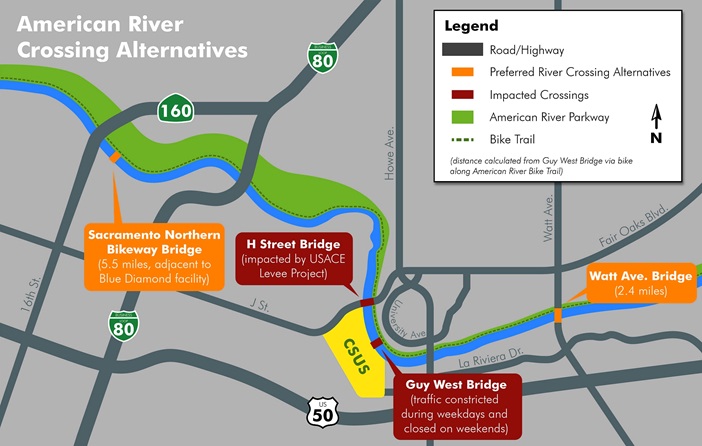Sacramento County supervisors imposed emergency restrictions Tuesday on smoking along the American River Parkway and barbecuing in all county parks, citing increased fire risks from the ongoing drought.
Smoking will no longer be permitted in nature areas and unpaved trails along the 23-mile American River Parkway. At all county parks, including the parkway, barbecue cookers will be limited to designated picnic areas or beaches, depending on the type of fuel used.
The Board of Supervisors unanimously passed the two ordinances after county parks have experienced 30 fires so far this year, including a 160-acre blaze along the parkway that delayed a Fourth of July celebration at Cal Expo and forced postponement of a Sacramento Republic FC soccer game. Fire officials believe most of the fires are due to human activity.
“The parks facilities continue to become drier and increase our fire risk,” said Sacramento County regional parks director Jeff Leatherman. “This would prevent people from walking to an open space and setting up a barbecue.”
The new rules take effect immediately and come just before the Labor Day holiday, when many Sacramentans are expected to hit county parks for barbecues and parties.
“To me, this is a matter of common sense,” said Supervisor Phil Serna, whose district includes a large swath of the parkway.
Violators can expect to pay a fine of $50 and court fees for the first infraction. Repeated offenses can cost up to $100. Leatherman said rangers will seek to educate before issuing citations.
The drought conditions, along with the dry brush, are creating an environment where fires can grow out of control very quickly. The American River Parkway has borne the brunt of the flames – accounting for 29 of the 30 fires in the county parks system so far. In 2013, the parkway was the site of 64 fires.
Four of the blazes this year were classified as “major” by the Sacramento Fire Department, consuming a total of 235 acres, according to Roberto Padilla, a department spokesman.
Fire officials have been unable to pinpoint the precise cause for most of the blazes, but Padilla said, “these fires are human caused … what we cannot determine is if they are accidental or arson.”
American River Parkway visitors can still smoke on paved trails, levee tops, golf courses and picnic areas.


